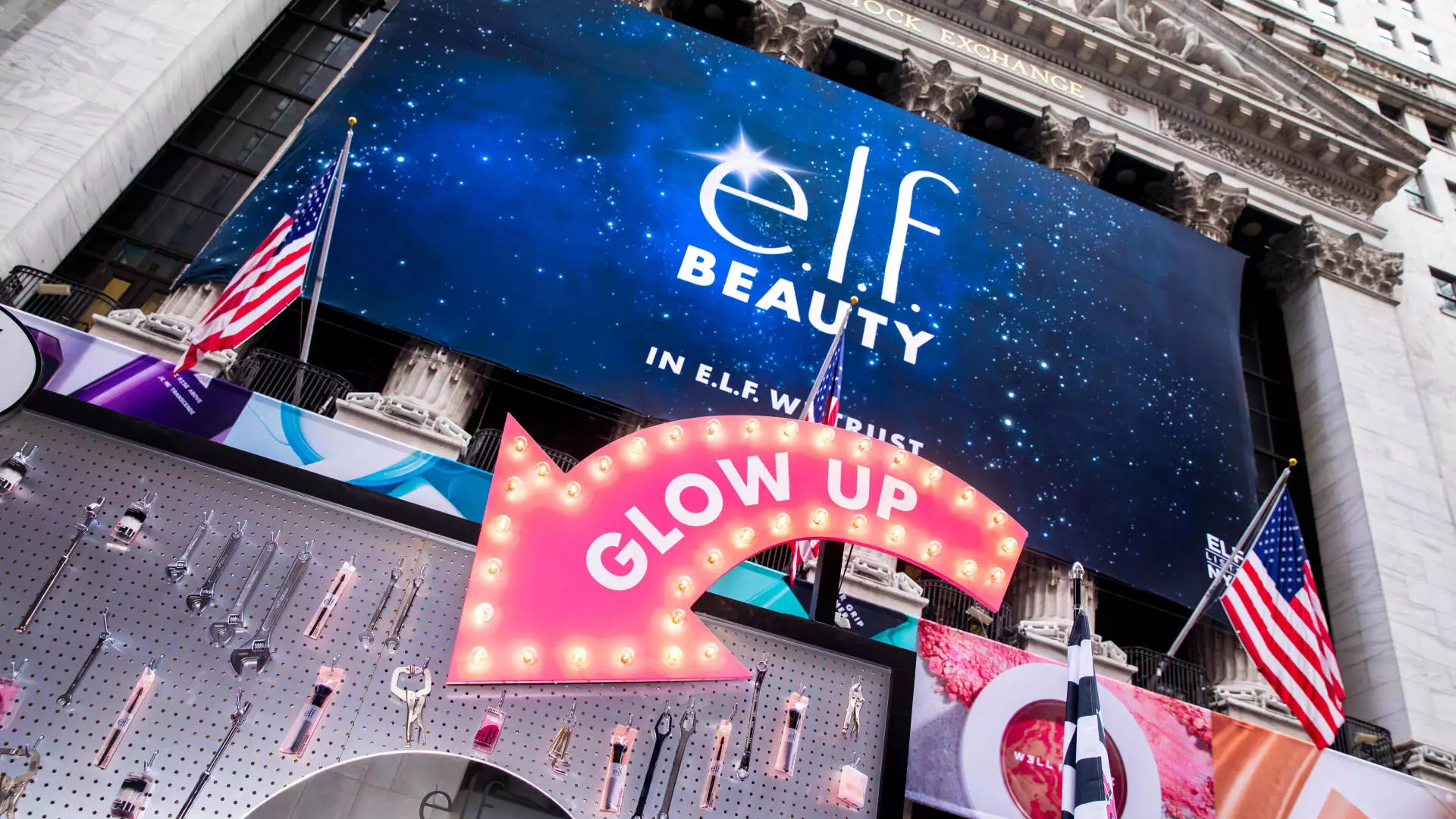In the ever-evolving landscape of international trade, the implementation of tariffs serves as a critical point of contention affecting companies globally. For organizations like E.l.f. Beauty, which produces approximately 80% of its cosmetics in China, the recent announcement by President Donald Trump regarding a 10% tariff on Chinese imports caught industry attention. Rather than exhibiting outright alarm, CEO Tarang Amin expressed a sense of relief, considering that previous discussions had alluded to tariffs as high as 60%. This sentiment speaks volumes about the volatile nature of trade relations and highlights the precariousness businesses face when navigating complex supply chains.
The relief felt by Amin can be attributed to the global environment of escalating trade tensions. The prospect of lower tariffs, although still a burden, presents a lesser evil compared to the chaos that could ensue from more severe tariffs. Companies in similar positions are undoubtedly monitoring developments closely, as fluctuating trade policies create uncertainty that affects strategic planning and operational decisions.
Amin’s remarks regarding the potential for price adjustments in response to tariffs reveal the delicate balancing act organizations must perform to maintain profitability while also considering consumer perceptions. The CEO stated, “we’ll see whether we need to,” indicating a cautious approach predicated on a thorough assessment of market conditions. This indicates a broader trend among companies grappling with how to manage profitability while keeping prices competitive in an already crowded market.
History has shown that when faced with higher tariffs, many companies do opt for price increases to shield margins. For example, E.l.f. previously raised prices on one-third of its products by $1 when tariffs peaked at 25%. This move was met with positive consumer feedback, showcasing that even in markets dominated by budget-conscious shoppers, there is room for strategic pricing that aligns with ongoing economic pressures. Nonetheless, how companies choose to adapt also hinges on ongoing shifts in consumer sentiment and competitive offerings.
The past few years have illuminated the need for robust supply chain strategies, particularly for brands heavily reliant on specific countries for manufacturing. The commentary from E.l.f. Beauty underscores a critical strategy: diversifying production capabilities. Inflating geopolitical tensions prompted E.l.f. to decrease its reliance on Chinese manufacturing from nearly 100% to a 20% reduction. This proactive measure not only cushions the potential impact of tariffs but also signifies a broader trend where companies are looking to fortify supply chains against future disruptions.
Similarly, E.l.f.’s expansion of its international business further establishes a buffer against U.S.-centric economic fluctuations. By cultivating diverse revenue streams outside the United States, the company situates itself favorably in a world still fraught with trade uncertainties. Such strategic maneuvers might not just be about meeting current challenges but also about weathering future storms in the global marketplace.
As the tug-of-war between Washington and Beijing continues, the ramifications of prospective tariffs extend beyond mere price adjustments. They signal a critical juncture for brands aiming to carve out sustainable market positions amidst ongoing fluctuations. While E.l.f. Beauty currently feels somewhat insulated due to its strategic repositioning, the ripple effects of sustained tariffs could yield broader implications for the beauty industry and beyond.
Brands will not only have to master the art of price elasticity but also foster agile supply chains to ensure resilience against future volatility. Moreover, as political landscapes evolve, organizations must remain vigilant and adaptable, demonstrating the ability to navigate these challenges without alienating their customer base. This era of uncertainty invites a reconsideration of traditional operational models, propelling companies like E.l.f. to rethink their approach to manufacturing, pricing, and customer engagement in an increasingly interconnected world.
The situation faced by E.l.f. Beauty encapsulates the challenges and opportunities present in modern-day commerce, showcasing the significance of agility, consumer insights, and strategic foresight. As businesses adapt to the shifting realities of global trade, they must remain cognizant of the underlying economic currents that shape their operational landscapes.

